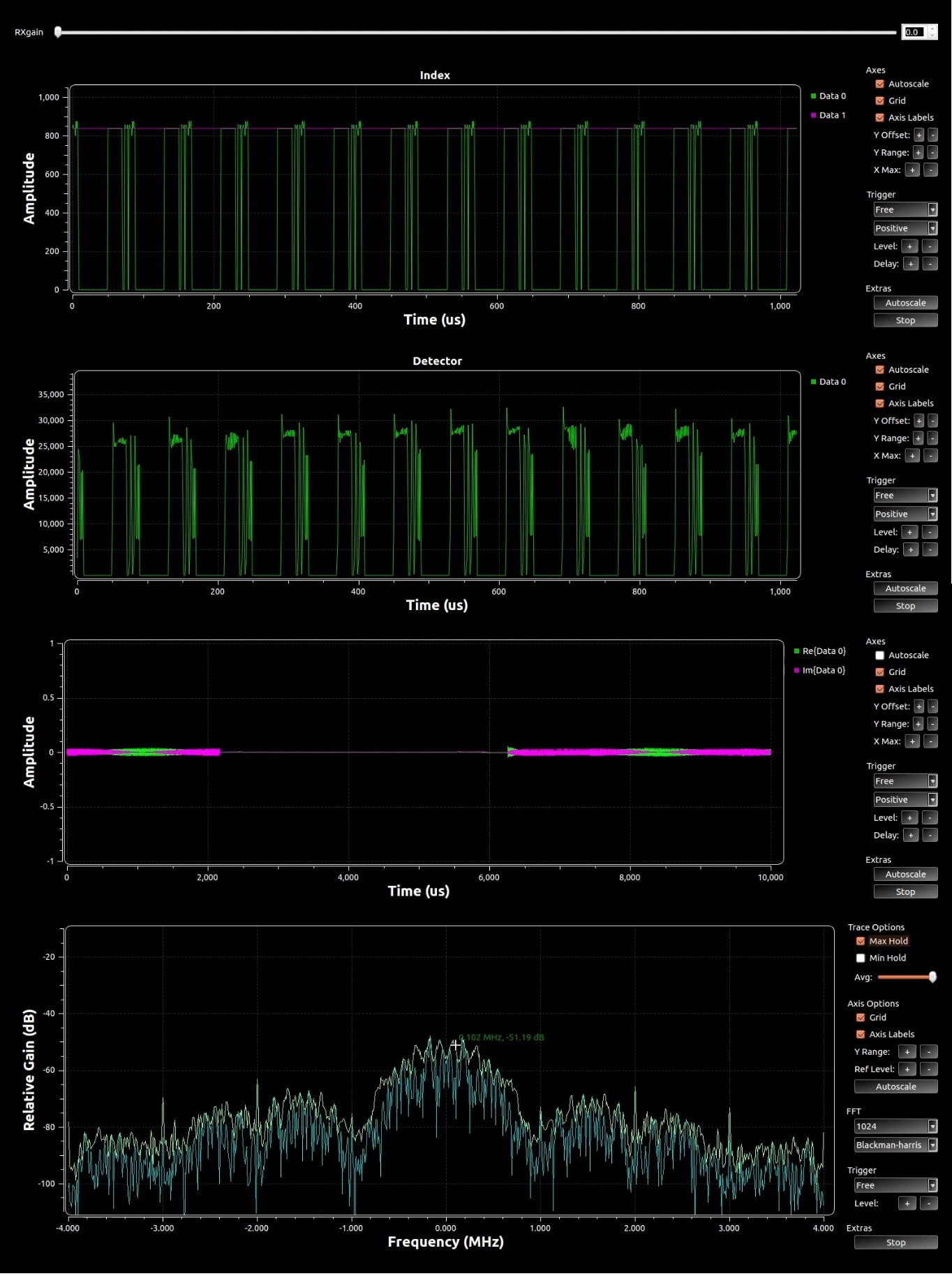What is a spread spectrum communications and why do we use it ?
Generally, digital wireless communication this is a process where binary information is transmitted by two symbols of the radio wave which are different from each other and other signals as much as possible.
Spread spectrum is a technique that increases the difference between transmitted symbols by transforming of each one in series of symbols of shorter duration and wider spectrum.
The greater the difference between the transmitted symbols, the more reliable the communication, but the lower the data rate.
Challenges of a spread spectrum communications
Transmitting of spread spectrum signal is a quite easy task, but receiving is hard because it performed by a coherent receiver. Thus, received symbol and its local copy at the receiver must coincide in time, frequency and phase. Synchronization of the receiver and the transmitter is needed. And developers are faced with such problems:
- (inter-) symbol synchronization;
- intrasymbol synchronization;
- frequency error;
- phase error;
- holding of coherence/synchronization;
- false detection.
The easiest way is to use dedicated synchronization channels or infrastructure as in GPS or mobile CDMA. But, it is very expensive, difficult and limits users within this infrastructure.
Modern SDR technologies have made it possible to build asynchronous DSSS receivers, but often they have such disadvantages:
- unable to receive signals which are covert by natural noise or at the environment with significant interferences (receivers based on LFSR);
- unable to establish simultaneous multi-user/-link communications (using CSS/FHSS technique).
Our solution
As a result of studying the experience of colleagues and companies in the industry, we've created a robust spread spectrum technology that overcomes all challenges mentioned before and has additional competitive advantages. Benefits of our asynchronous spread spectrum transceiver are based on:
-
unique binary spread spectrum sequence sets for more reliable communication;
-
high data rate encoder - MMBOK (Multichannel M-ary BiOrthoigonal Keying), details here;
- the detector that is adaptive to frequency error and interference/noise background.
Thus, our technology of Asynchronous DSSS Transceiver in the case of spreading factor M = 1024 and frequency band (SSB) dF = 1MHz (2MHz - double side-band) can perform:
- data rate in single channel, R = 7.68/9.6 kbps;
- resistance to narrowband interference, Gsp_nb = >30dB;
- resistanse to any kind of wideband interference, Gsp_wb = >15dB;
- signal power spectral density decreasing = 15dB;
- signal level of opearational covert link below natural noise, BER 10-3 = -6dB.
Trials
Results of the trials of detection processes of our transceiver with parameters mentioned above are disclosed here. Each picture below consists of 4 figures, from top to bottom:
- DSSS symbol time position value: green - current, violet - captured/locked;
- detector response value;
- the received signal in time domain;
- the spectrum of the received signal.
The first picture below demonstrates receiver reaction on a pure signal from our modem.


Results of a trial of resistance to narrowband interference are shown in the figure below.

Results of a trial of covert communication and resistance to wideband interference in form of natural noise are shown in the figure below.

More detailed description of these trials at next video:

Results of a trial of covert communication and resistance to wideband interference in form of natural noise are shown in the figure below.

More detailed description of these trials at next video:

